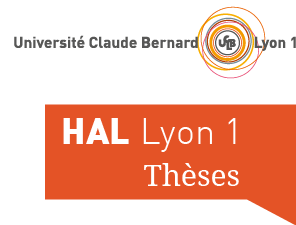On the link between saccadic adaptation and visuospatial attention
Adaptation oculomotrice comme outils d'étude de l'attention spatiale
Résumé
Attention and Saccadic Adaptation (SA) are critical components of visual perception, the former enhancing sensory processing of selected objects, the latter maintaining the eye movements accuracy towards them. Also, a similar dichotomy could be applied to both: voluntary saccades and endogenous attentional shifts follow internal goals while reactive saccades and exogenous shifts are elicited by sudden changes in the environment. Further, their neural substrates partially overlap and they impact each other behaviorally. This PhD work investigates the hypothesis of a functional coupling linking attention and SA in healthy humans. Our experimental contributions all rely on the measurement of attentional performances before and after an exposure to SA (or control). In the first study, we recorded brain magnetic fields to investigate neurophysiological bases of the reactive/exogenous coupling. In the second study, we compared exogenous orienting measured in a Posner-like paradigm before and after reactive SA. Finally, using the same design, the third experiment investigated the voluntary/endogenous modality. We found that SA increased gamma band activity and boosted the orienting of spatial attention. We thus propose that this functional coupling relies on neuronal populations co-activated by both oculomotor plasticity and attention in the Posterior Parietal Cortex (PPC). The initial activation would emerge from a dual effect of the cerebellum inhibiting the left PPC and activating the right PPC. This effect would increase the right hemispheric dominance and the leftward attentional bias. This work opens new perspectives for the rehabilitation of visuoattentional deficits
L’attention et l’Adaptation Saccadique (AS) sont des composants essentiels de la perception visuelle, le premier renforce le traitement sensoriel des items sélectionnés, le second maintient la précision des mouvements des yeux vers ceux-ci. Ils partagent aussi une dichotomie : les saccades volontaires et l’orientation endogène de l’attention suivent nos buts internes tandis que les saccades réactives et l’orientation exogène répondent aux changements soudains dans l’espace visuel. Leurs substrats neuronaux se superposent en partie. Enfin, chacun impacte l’autre au niveau comportemental. Ce travail de doctorat étudie l’hypothèse d’un couplage fonctionnel entre attention et AS.Toutes nos études chez l’humain sain reposent sur la mesure des performances attentionnelles avant et après l’exposition à l’AS (ou contrôle). Dans la première nous avons exploré les bases neurophysiologiques du couplage réactif/exogène en magnétoencéphalographie. Dans la suivante nous avons comparé l’orientation exogène mesurée par un paradigme de Posner avant et après AS réactive. La dernière, basée sur le même modèle, explorait la modalité volontaire/endogène. Nos résultats montrent que l’AS augmente l’activité oscillatoire gamma et renforce l’orientation de l’attention spatiale. Nous proposons que le couplage repose sur la co-activation de populations neuronales par la plasticité oculomotrice et l’attention au niveau du Cortex Pariétal Postérieur (CPP). Cette activation émerge initialement d’un double effet du cervelet qui inhibe le CPP gauche et active le CPP droit. Cet effet augmente la dominance hémisphérique droite et le biais attentionnel vers la gauche. Notre travail ouvre des perspectives de rééducation des déficits visuo-attentionels
Origine : Version validée par le jury (STAR)
